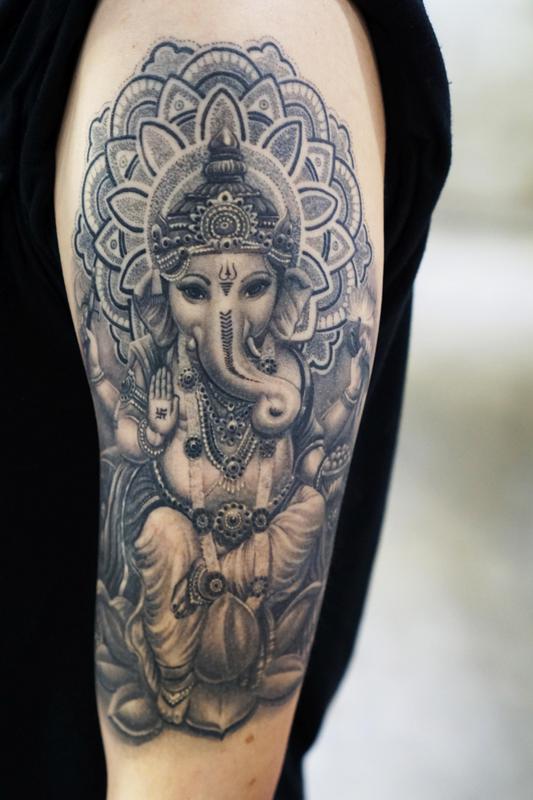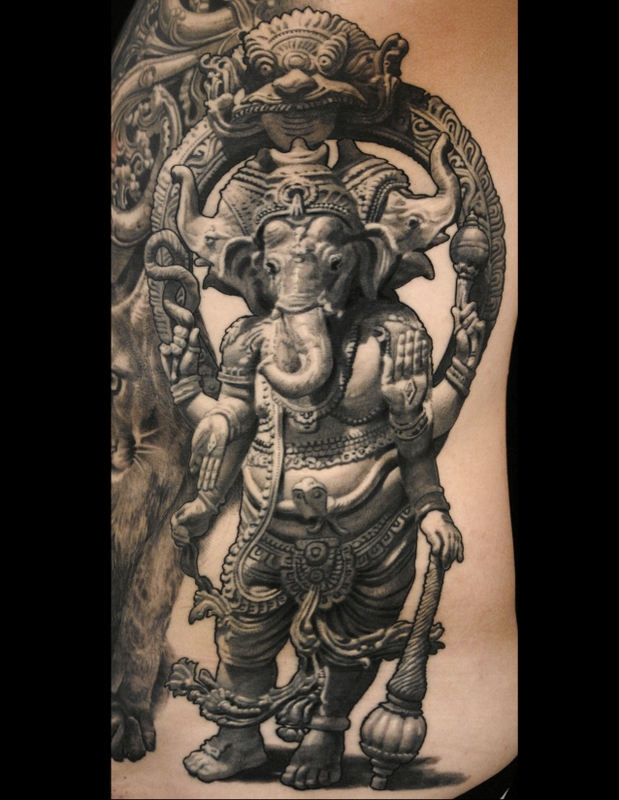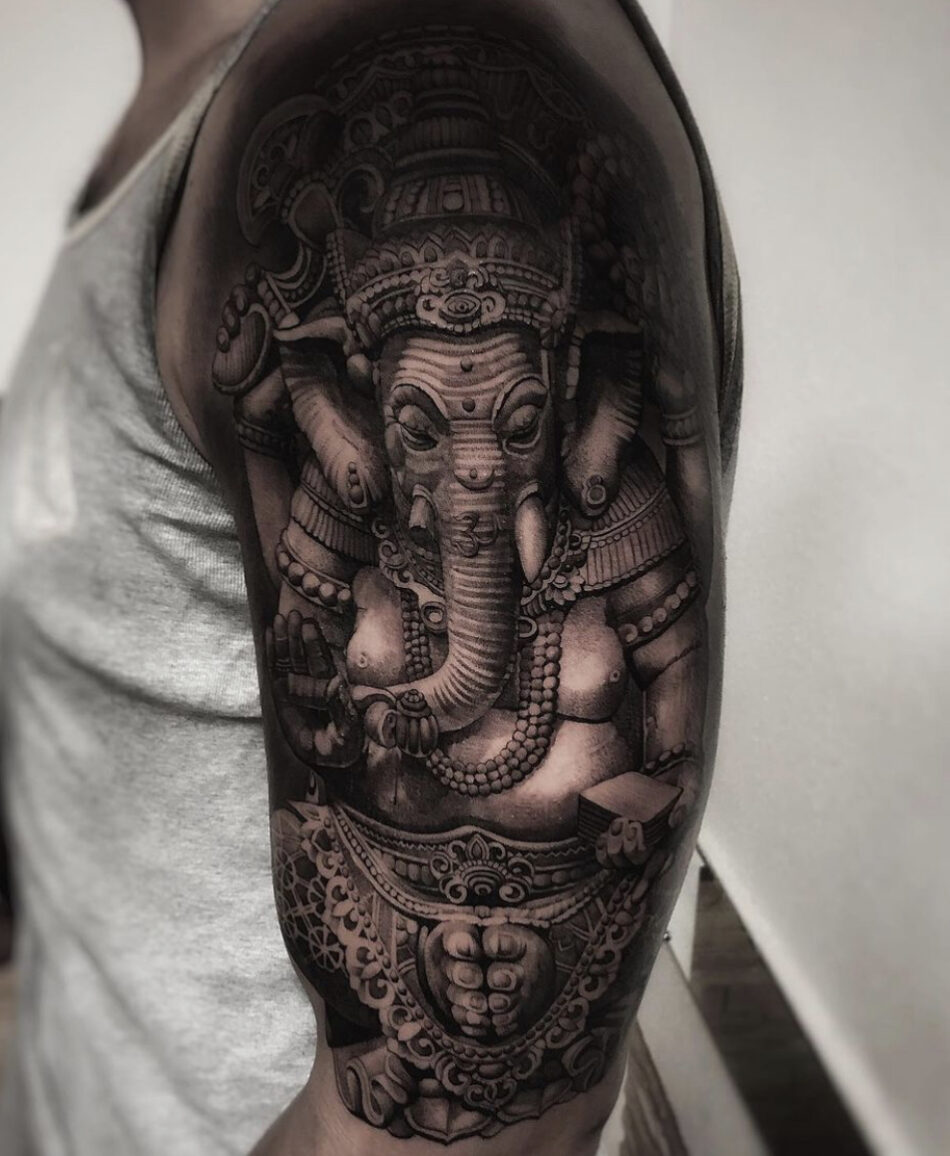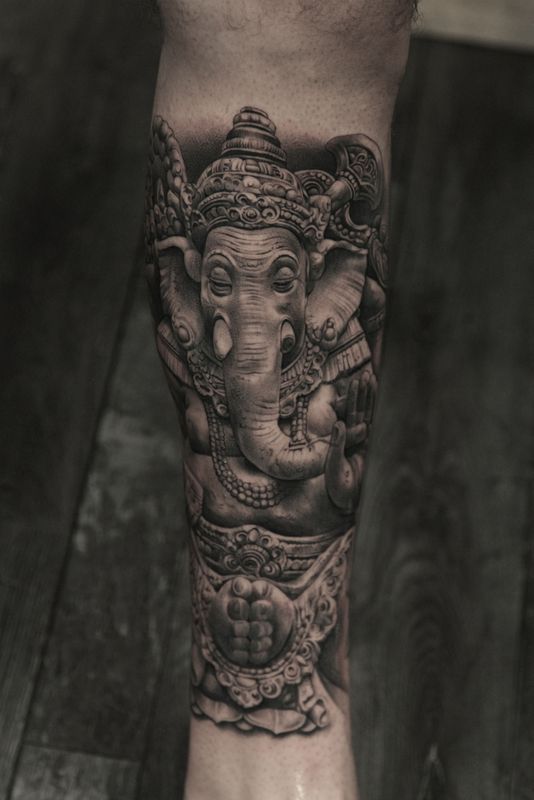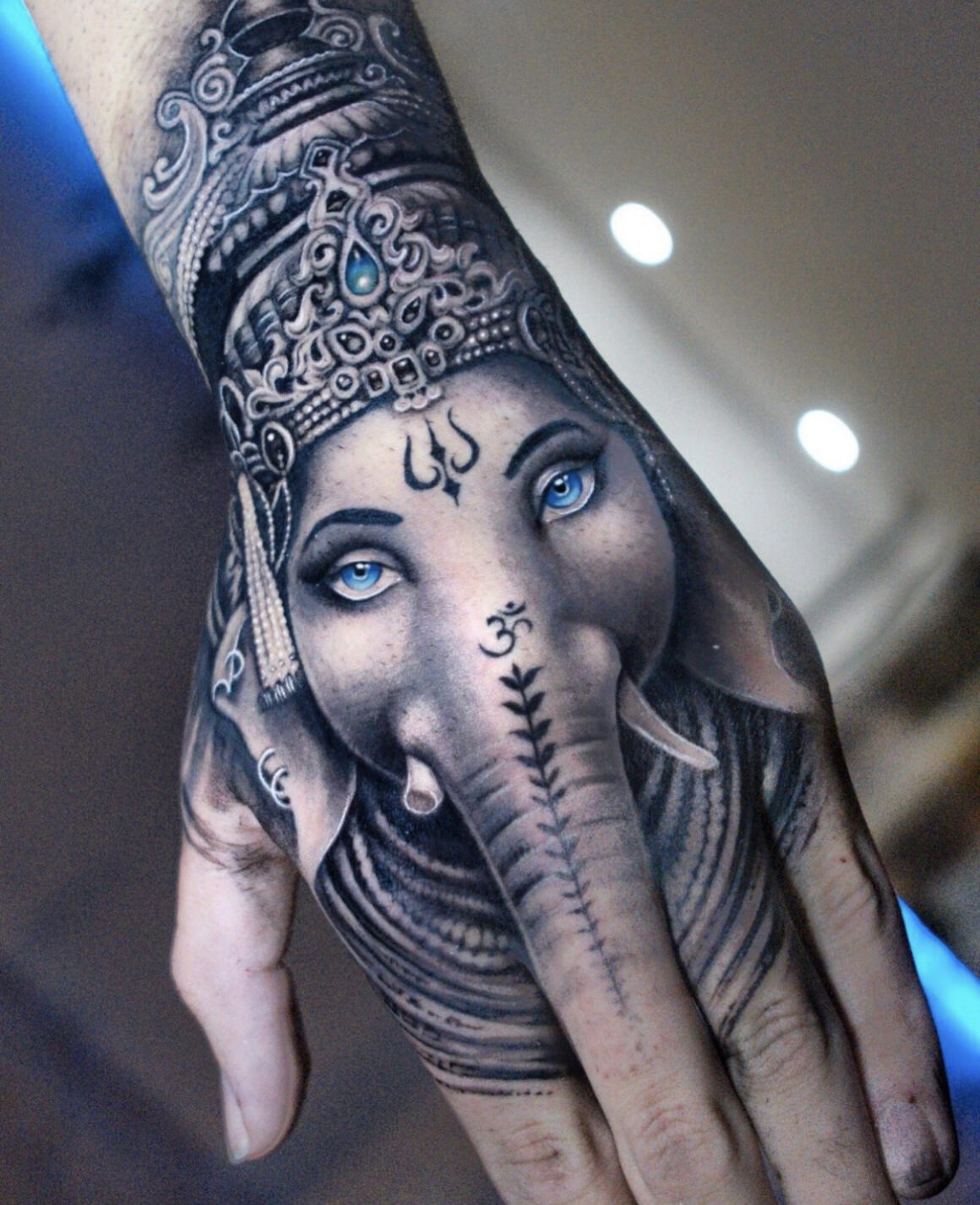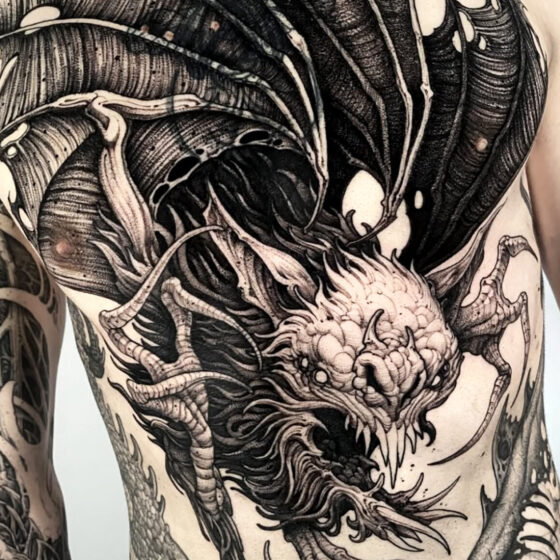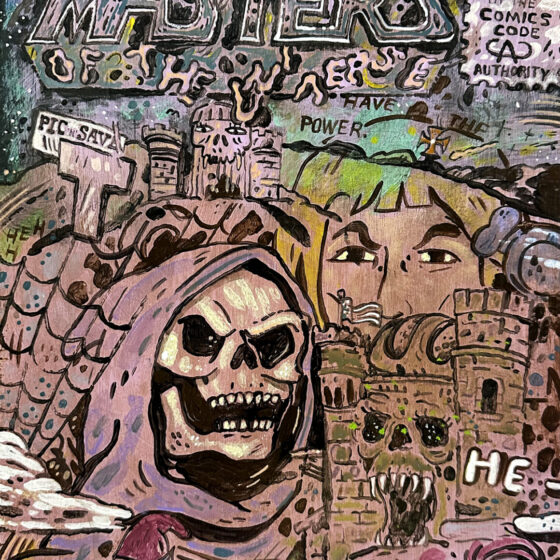Let’s talk about guru of wisdom, prosperity and commerce who, from faraway India, has conquered the world and tattoo art devotees.

The Cult of Ganesha is extremely widespread even outside of India, not only within the Hindu religion but also in Buddhist and Jain cultures. The name Ganesha, in fact, is a compound word in Sanskrit, composed of ‘gana’ (group, crowd), and ‘isha’ (ruler or leader). Ganesha is therefore the leader, the one who regulates society and forms the laws, the leader of all humanity. Ganesha has a dozen different names and each one refers to a particular aspect of the deity, such as Dwaimatura (who has two mothers), Ekadanta (who has a tusk), Lambodara (who has a pot belly) or Gajanana (who has the face of an elephant).

The nature of his head
Despite western representations, Ganesha has not always been depicted in the same way and often, in the ‘Heramba-Ganapati’ version he has been given as many as five elephant heads. The various Hindu traditions can’t even reach an agreement as to how he came to have the head of an elephant. A legend says that little Ganesha lost his head during the celebrations of his birth, when his mother, Parvati, wanted Shani, the god of destruction to honour the boy.As soon as he looked at the boy, the head was reduced to ashes. So Vishnu, to make amends, mounted his eagle Garuda and went to the Pushpa-Bhadra river, returning with the head of an elephant which he placed on the boy, bringing him back to life and bestowing upon him the great honour of wisdom.
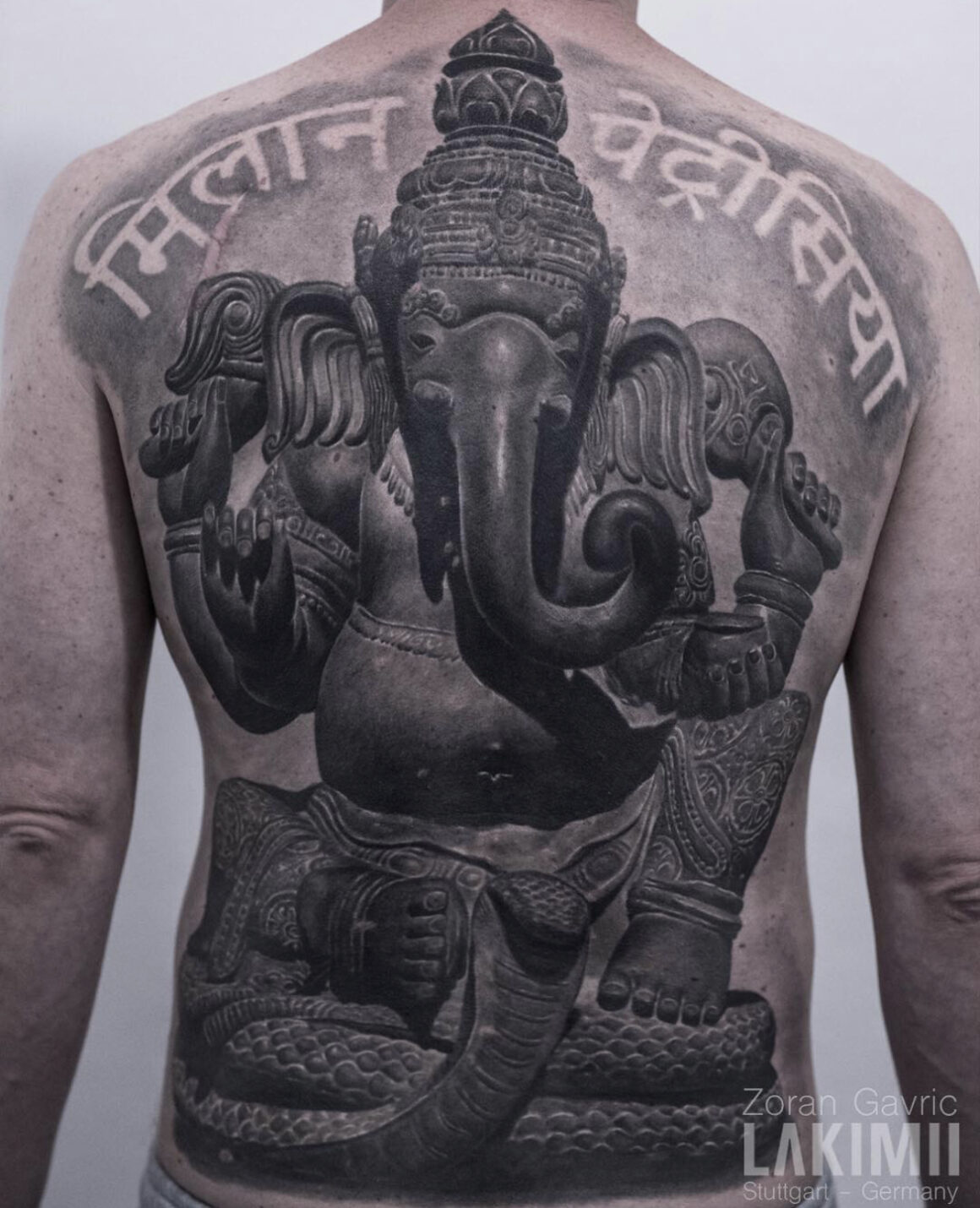
The rat symbol
With regards to its iconography, Ganesha is often depicted seated on a throne, with a single tusk (a symbol of determination in decision-making) cross-legged and with a small rat at his feet, according to ancient rules of aesthetics whose origins and motives have been lost. Perhaps rat is Ganesha’s messenger who reported the secrets of the world to him. According to other authors, the rat symbolizes the virtues of humility and unselfishness, whilst yet others note that the rat is nearly always in a submissive position in relation to Ganesha. This could represent the enslavement of the destructive powers of the rat (an enemy to farming and a carrier of infectious diseases) thanks to Ganesha’s superior intellect and mind. Here Ganesha assumes the role of protector of the harvest and supplies of rice and grain.
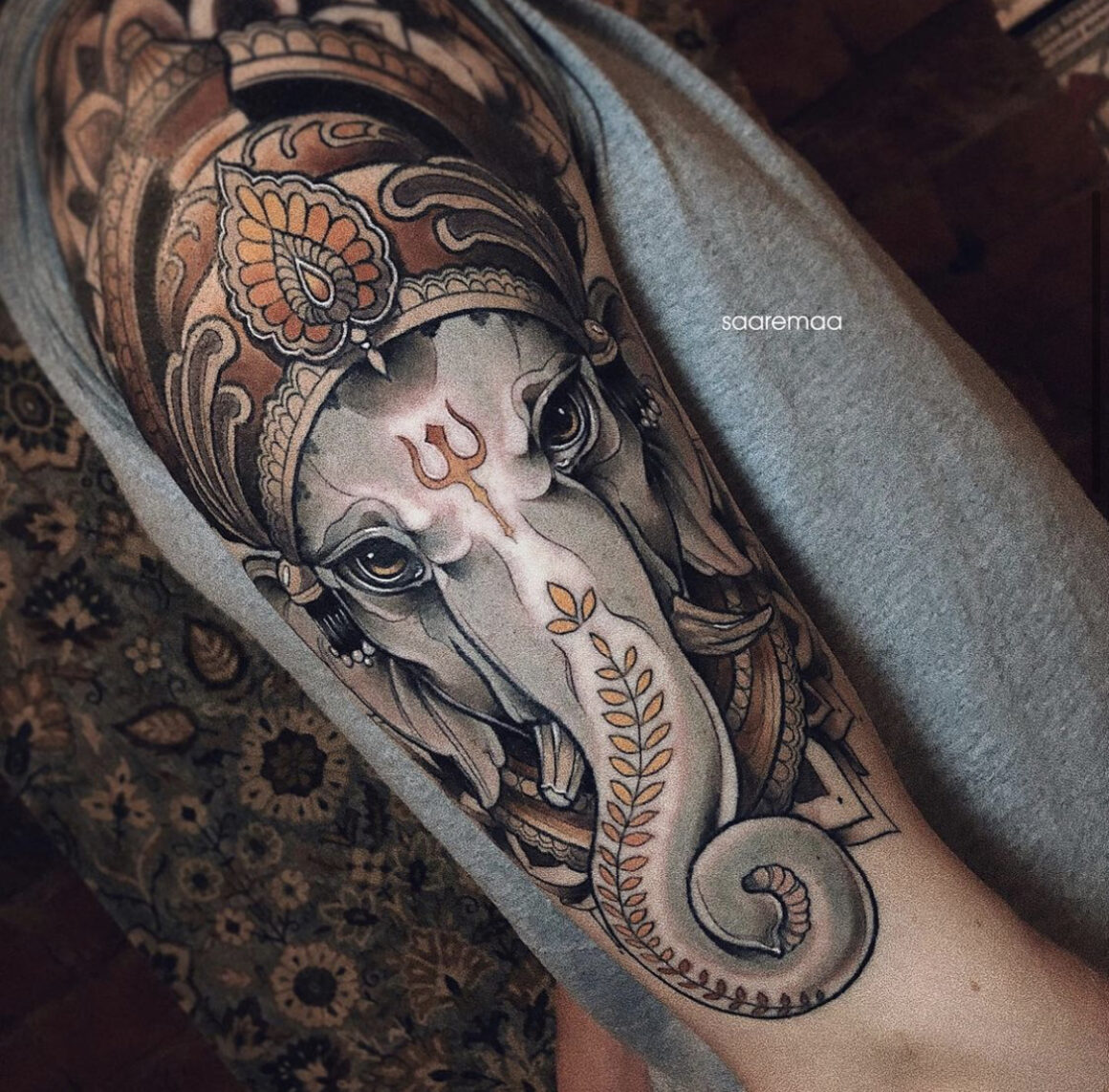
Scribe and protector
Even in the Buddhist religion the figure of Ganesha is respected and worshipped, mainly as the God of literacy and culture. It is believed that he was the scribe of the Gods and it was he who compiled the divine laws and wrote up the “minutes” of the meetings between deities. In Thailand, Cambodia and Vietnam, on the other hand, Ganesha is principally considered the protector of refugees, but the feature that has made him more popular in modern times, even outside the Hindu culture, has certainly been the fact that he is the protector of commerce and economic prosperity. Just imagine that in the Bengal region it is attached to the banana tree, which is a symbol of material wealth.

Success and protection (if he smiles)…
In the ‘Shiva Purana’ we are told he had two children: Ksema (prosperity) and Laba (profit) whilst other traditions speak of a third child Suba (safety). He is always paid tribute with great honours and prayers especially when a new commercial activity is starting up, if a car is to be purchased or if a new business is to be launched. His devotees maintain that «If Ganesha is made happy, he will bring success, prosperity and protection against disasters».

